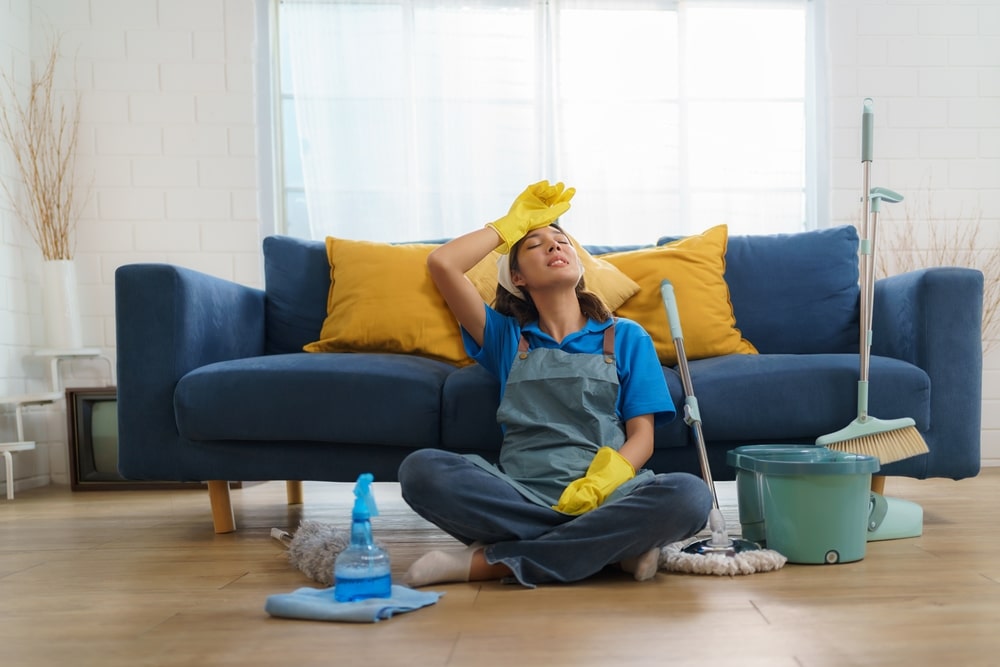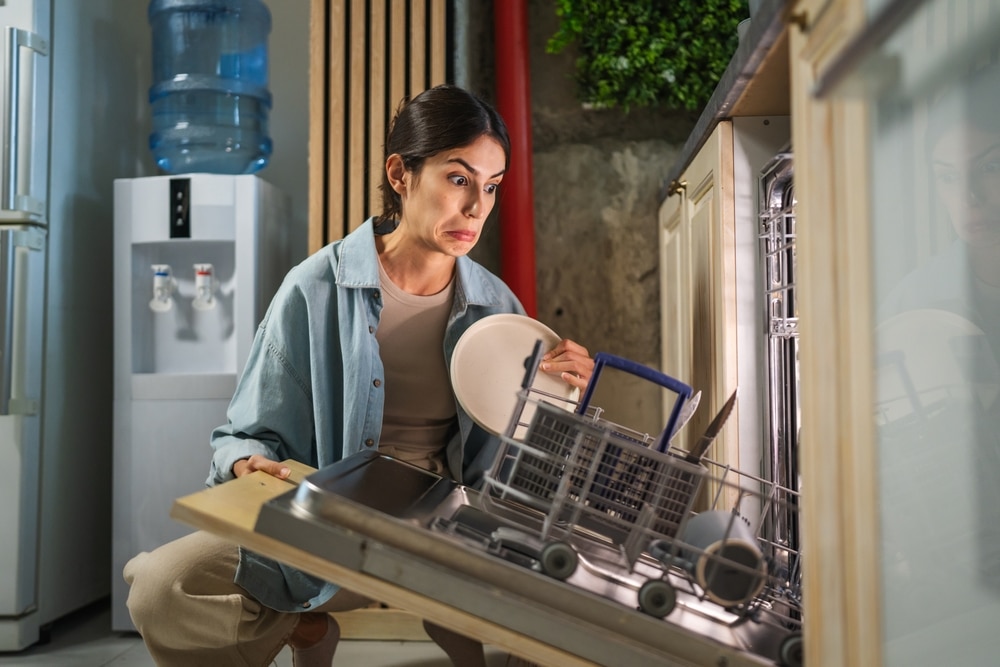Every home has its own rhythm of tidying up, scrubbing surfaces, and chasing stray dust bunnies. But while most people believe they’ve developed reliable methods, not everything we do around the house is actually helpful. A lot of the habits we rely on come from things we’ve heard from family, friends, or the internet, and they often sound convincing at first. The trouble is that many of these ideas are nothing more than cleaning myths, and following them can make chores harder, leave surfaces less hygienic, or even damage your belongings. Understanding the truth behind common misconceptions makes everyday cleaning easier, smarter, and far more effective.
Why Some cleaning myths Stick Around
People tend to trust what they’ve heard for years, even without checking the facts. This is one of the reasons cleaning myths feel so believable: they’re passed down from generation to generation, and repetition makes them sound true. Another reason is that many of these ideas are built on a grain of truth, even if the overall claim is misleading. When something “sounds right,” it’s easy to accept it without thinking about the science behind it. As a result, cleaning myths continue to spread, especially online, where quick hacks and shortcuts get a lot of attention.
Myth 1: More Soap Means a Deeper Clean
Using extra soap feels like it should work better, but adding too much can actually leave residue that attracts more dirt. This is one of the most persistent cleaning myths because people assume foam equals cleaning power. In reality, using more than recommended can clog washing machines, make floors sticky, and leave streaks on dishes. The truth is that modern detergents and cleaning products are concentrated, meaning a small amount goes a long way. When you overload a surface with soap, you also make rinsing much harder, which can turn a simple task into a frustrating one.
Myth 2: Disinfecting and Cleaning Are the Same Thing
Many people still believe that wiping a surface with a disinfectant automatically removes dirt. But disinfecting and cleaning are two separate steps, and mixing them up is one of the most common cleaning myths. Cleaning removes visible grime, dust, and residue, while disinfecting kills bacteria and viruses. If you disinfect a dirty countertop, much of the disinfectant gets blocked by the dirt, making it far less effective. A proper routine always involves cleaning first, then disinfecting if needed. Skipping this order can leave surfaces looking clean, but still contaminated.

Myth 3: Vinegar Works on Everything
Vinegar is a fantastic natural cleaner for many tasks, but it’s not a magic solution. It can damage natural stone, dull hardwood floors, and ruin certain finishes. Yet, this idea remains one of the widespread cleaning myths because vinegar seems gentle and safe. While it’s great for glass, stainless steel, and mineral build-up, it’s far from an all-purpose cleaner. Using vinegar on the wrong material can create microscopic scratches or degrade protective coatings over time. Knowing when vinegar works—and when it doesn’t—keeps your home looking better for longer.
Myth 4: Feather Dusters Actually Remove Dust
Feather dusters look elegant and make you feel like you’re tidying quickly, but most of them just spread dust around instead of picking it up. This misunderstanding is part of the broader collection of cleaning myths that rely more on tradition than effectiveness. Feather dusters often move particles into the air, where they settle back onto surfaces minutes later. Microfiber cloths, on the other hand, trap dust due to their static charge and tiny fibers designed to grab particles. If your goal is actually removing dust, switching to microfiber makes a noticeable difference.
Myth 5: Bleach Fixes Every Problem
Bleach kills germs, but it doesn’t clean dirt—yet many people assume it does. This belief is tied to several cleaning myths that exaggerate the power of bleach. Bleach is excellent for whitening, sanitizing, and disinfecting, but it doesn’t remove grime or grease. In fact, using bleach on the wrong surfaces can cause permanent discoloration or release harsh fumes. Before reaching for it, it’s important to know what task you’re dealing with. Often, a regular cleaner does the job more safely and effectively, and bleach is only needed for specific situations.

The Problem With Quick Hack Culture
The internet is overflowing with “genius” tricks that claim to save time, money, or effort, but many rely heavily on cleaning myths that sound too good to be true. When you follow these shortcuts, you might accidentally damage appliances, ruin fabrics, or create stubborn build-up that is difficult to remove. Quick hacks get popular because they promise instant results, but real cleaning usually requires a bit of time and the right product for the job. Too many hacks focus on novelty rather than practicality, which is why it’s important to question the claims before trying them out.
Why We Love Believing in Easy Solutions
People love the idea of shortcuts—especially when it comes to chores we don’t really enjoy. That’s why cleaning myths spread so easily. If something promises to make a task easier, we want it to be true. But easy doesn’t always mean effective. Sometimes, the simplest methods are rooted in basic science: the right amount of cleaner, correct order of steps, and proper tools. When you rely on facts instead of assumptions, cleaning becomes more predictable and less stressful. Learning the truth behind these misconceptions helps create routines that are both efficient and satisfying.
How to Break the Cycle of Bad Advice
Breaking free from cleaning myths starts with understanding where the misinformation comes from. Many people learn by watching others, not by reading instructions or researching. Others are influenced by marketing that exaggerates what a product can do. Once you know what’s true, it becomes easier to spot misleading ideas. Reading labels, checking recommendations from reputable sources, and paying attention to how different materials react to products can make a huge difference. Over time, facts replace habits, and your cleaning routine becomes safer and far more effective.
The Value of Using Proper Tools
Many myths exist because people use the wrong tools for the job. Old sponges, worn-out brooms, or ineffective devices create disappointing results, which then get blamed on the method instead of the tool. When you replace these with well-designed items—microfiber cloths, HEPA vacuums, dedicated scrub brushes—you immediately see better outcomes. This shifts your perspective and makes it easier to let go of cleaning myths that never worked in the first place. The right tools aren’t just minor improvements; they can completely transform the way you approach chores.
Choosing Knowledge Over Assumptions
Knowledge empowers you to make better decisions about your home. When you understand which products to use, how much to apply, and the correct order of steps, everything becomes more efficient. Cleaning myths lose their appeal because you can clearly see what works and what doesn’t. This doesn’t mean cleaning becomes complicated—it actually becomes easier. Instead of guessing or relying on old advice, you follow simple, reliable methods that consistently give you great results.
Cleaning doesn’t have to be confusing or filled with unnecessary steps. Most of the frustration people feel comes from habits they didn’t even realize were based on cleaning myths, and breaking free from them makes everyday chores so much smoother. When you replace assumption with knowledge, everything from wiping counters to mopping floors becomes more effective. It’s all about understanding what really works and letting go of the ideas that only add extra effort. By trusting proven methods instead of outdated advice, you’ll create a cleaner, healthier home without wasting time or energy.
Are you not done yet? Do you want to learn other ways to make your cleaning life easier? Then visit our Cleaning Tricks category page.



